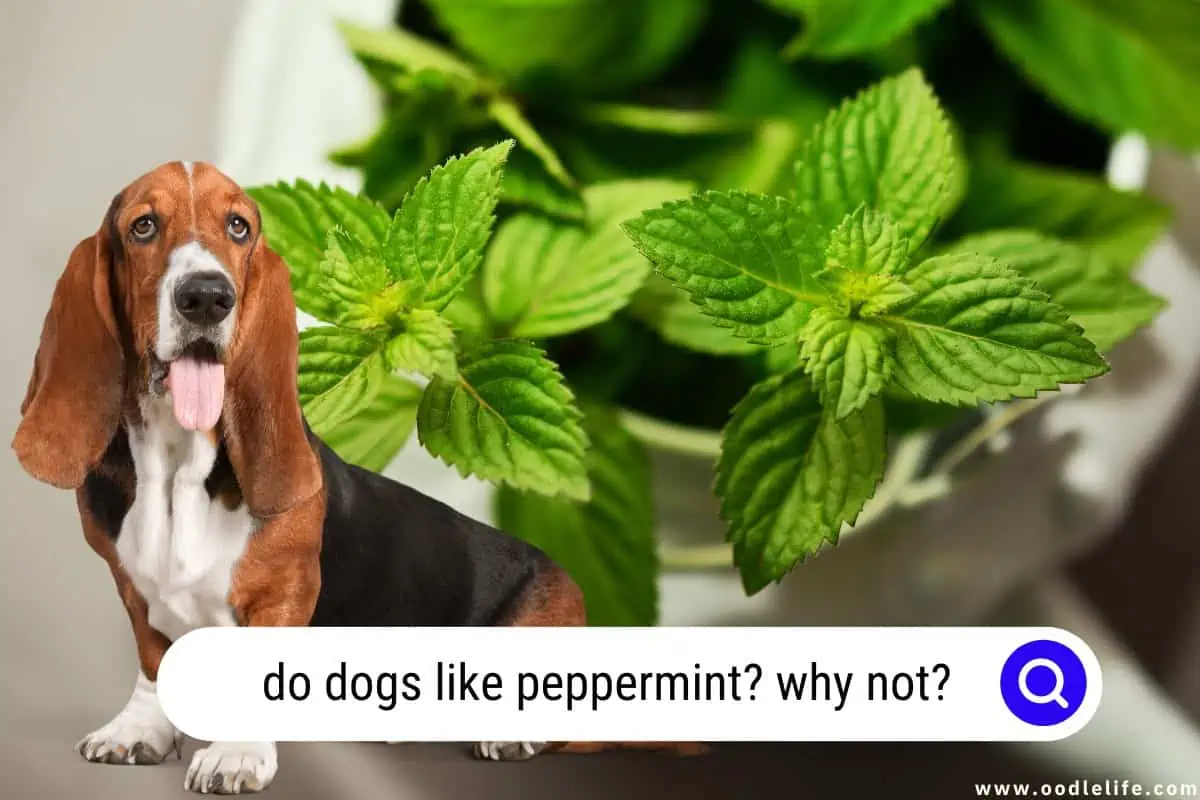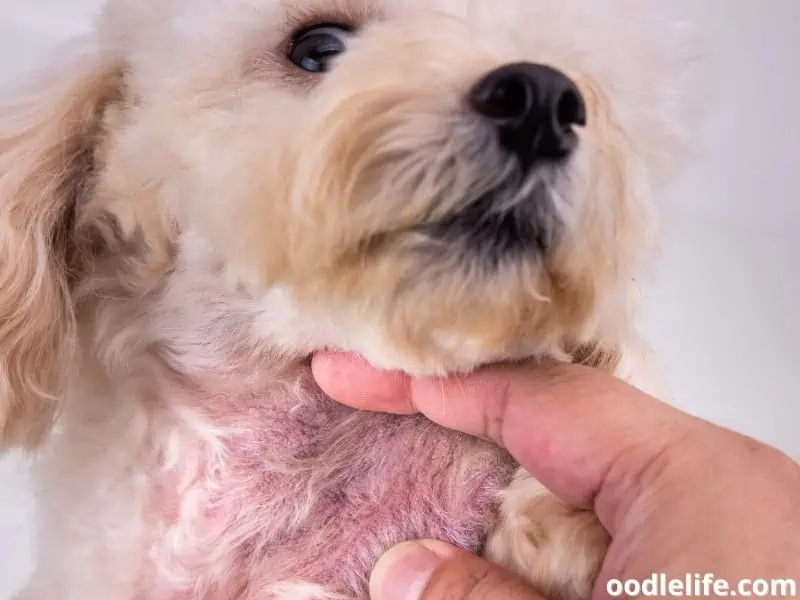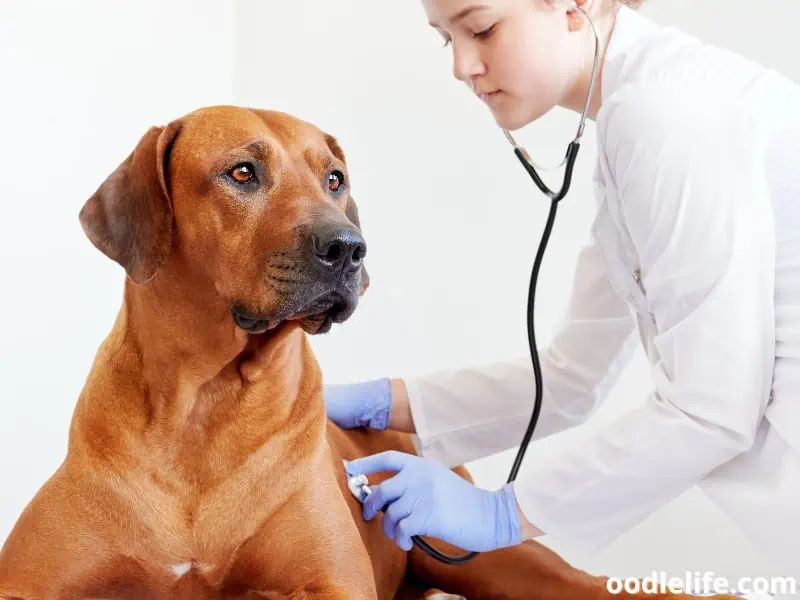Do Dogs Like Peppermint? Why NOT?
Ever caught your dog sniffing around as you’re sipping on a peppermint tea or unwrapping a peppermint candy? It’s natural to wonder if our four-legged friends share our fondness for this fragrant herb. Peppermint isn’t just a holiday staple or breath-freshener; it’s also a subject of canine curiosity.
So, do dogs actually like peppermint? Let’s delve into the science, myths, and canine taste buds to find out!

In short, the relationship between dogs and peppermint is a complex one. While some dogs seem intrigued by the scent, others may be repelled. Though peppermint is generally safe in small amounts, it’s not a flavor that all dogs will appreciate or should consume in large quantities.
Can Dogs Smell Peppermint?
Dogs have an incredible sense of smell with around 100,000 to 300,000 olfactory receptors (compared to human’s 6 million), which makes their sniffers incredibly sensitive. With this in mind, dogs are absolutely capable of detecting the smell of peppermint.

However, whether they like the scent or not is another story. Scientific research on dogs’ preferences for specific scents is limited, so it’s difficult to provide a definite answer regarding peppermint’s appeal to canines.
Dangers of Peppermint Consumption for Dogs
Though peppermint might not be their favorite treat, some dogs may take a curious nibble out of a peppermint plant or candy. It’s important to note that consuming large quantities of peppermint can be harmful to dogs, as it contains compounds that may cause gastrointestinal distress, vomiting, or diarrhea. Additionally, the sugar and xylitol found in some peppermint candies can lead to dental issues and be toxic to canines.
Keep the peppermint treats to a minimum if your furry friend seems to have a liking for them.
Peppermint Oil and Essential Oils
Essential oils, like peppermint oil, are particularly potent and should be used with caution around dogs. While peppermint oil has been used for various home remedies, it can also cause irritation or even be toxic to dogs when ingested or applied topically in high concentrations. Certain essential oil diffusers can also emit high levels of peppermint oil into the air, which might cause respiratory issues for sensitive dogs.

If you decide to use peppermint oil around your pets, make sure to do so responsibly, dilute the oil properly, and keep an eye on your pup for any signs of distress.
Symptoms of Peppermint Toxicity
If your dog has consumed too much peppermint or been exposed to high concentrations of peppermint oil, you should keep a lookout for potential signs of toxicity. Symptoms can include difficulty breathing, drooling, vomiting, diarrhea, lethargy, and muscle tremors. In severe cases, it may lead to liver damage or even be fatal.

If you suspect your dog has been affected by peppermint toxicity, don’t wait for them to start a minty-fresh yawn-a-thon – contact your vet immediately.
To sum it up, dogs can indeed smell peppermint, but whether they like it or not is still up for debate. Peppermint consumption and exposure to high concentrations of peppermint oil can pose risks for our canine companions. So, when it comes to peppermint, it’s best to keep it out of paw’s reach and stick to dog treats that are designed for their safety and enjoyment.
Safety Concerns with Peppermint Products

Candy and Xylitol Toxicity
While humans enjoy giving their furry friends treats, it’s essential to keep some human treats like peppermint candy away from our canine companions. Many candies contain xylitol, a sugar substitute that can be toxic to dogs. Ingesting xylitol can cause rapid insulin release in dogs, leading to hypoglycemia (low blood sugar) and sometimes even liver failure.
So, next time you want to share a candy cane or any other mint-flavored treat with your pup, think twice and opt for a dog-safe treat instead.
Dangerous Essential Oils for Dogs
It’s not just candies that pose a risk; some essential oils can also be hazardous to your dog’s health. Peppermint oil can be harmful to dogs when ingested or applied topically. While it may help us feel refreshed, it can cause skin irritation, gastrointestinal upset, or breathing difficulties for our furry friends.
And peppermint is not the only essential oil to be cautious about; other oils like tea tree, pennyroyal, cinnamon, ylang-ylang, sweet birch, and pine can also be harmful to dogs. These oils can cause a range of issues, including skin irritation, vomiting, diarrhea, and even possible organ failure in severe cases.
Being a responsible dog owner means staying informed about what’s safe and unsafe for your pet. So, keep those essential oils and minty treats to yourself, and let your pooch enjoy something more suitable, like a good ol’ fashioned dog bone!
Potential Health Issues in Dogs

Menthol-Containing Products
Menthol, a key component found in peppermint, can cause a range of health issues when ingested by dogs. While some doggos might enjoy the smell of peppermint, it’s crucial not to let them consume it. After all, our furry friends don’t always know what’s best for them.
Digestive Problems
When it comes to Fido’s tummy, peppermint can lead to some unpleasant side effects. For instance, dogs that consume peppermint may experience vomiting and diarrhea. It’s always better to stick with dog-friendly treats when rewarding their good behavior, rather than risking a digestive disaster with peppermint.
Fleas and Ticks Control
Peppermint essential oil is sometimes used as a natural way to ward off fleas and ticks. However, it’s important to remember that too much of a good thing can turn into a problem. Consistently applying high concentrations of peppermint oil on your dog’s skin can cause irritation and other adverse effects.
As a responsible paw-rent, always consult with your vet before applying any natural remedies to your furry buddy’s skin.
Liver Damage and Failure
Another potential concern with peppermint is its effect on your dog’s liver. In some cases, consuming large amounts of peppermint oil can lead to liver damage or even liver failure. This scenario may present itself with symptoms like hypoglycemia and other serious health issues.
It’s best to play it safe and keep your canine companion’s minty breath to a minimum, instead of risking any liver complications.
Remember, we love our four-legged friends and want to keep them as healthy as possible. Steering clear of peppermint in their diet is just one small step toward ensuring their long and happy life.
Signs of Peppermint Toxicity
While dogs might be intrigued by the smell of peppermint, it can be toxic to them if ingested or applied topically in large amounts. Be vigilant about observing your furry friend for any signs of peppermint toxicity. Here are some symptoms that you should be aware of, grouped into three sub-sections as H3s: Seizures and Neurological Symptoms, Skin Irritation and Allergies, and Respiratory Distress.
Seizures and Neurological Symptoms
If your pup gets a heavy dose of peppermint, it could cause some neurological issues. For example, they might experience lethargy and weakness, which could be a sign that something is off. Also, watch out for more severe reactions like seizures, which can be quite alarming.

Remember, Sparky’s twitching nose around the candy canes is a fair bit different from him convulsing on the floor.
Skin Irritation and Allergies
In addition to the neurological symptoms, peppermint can also cause some skin irritations and allergies. Fido might start drooling excessively, or you might notice redness and irritation on their skin. Just as you wouldn’t want to roll around in a field of mint, your dog probably wouldn’t appreciate being slathered in a peppermint-scented lotion.

Respiratory Distress
Lastly, respiratory distress is another potential outcome if your dog ingests or is exposed to too much peppermint. Coughing, difficulty breathing, and wheezing are common signs that they are experiencing some respiratory issues. Think of it like the time you accidentally sniffed too much of that “extra strong” minty chewing gum – except, of course, much worse for our canine companions.

In summary, it’s crucial to keep an eye on your dog’s reaction to peppermint, as it can cause different forms of distress. Monitoring them for neurological symptoms, skin irritation, and respiratory distress can help you keep your furry friend safe and healthy.
Treatment and Prevention
What to Do If Your Dog Ingests Peppermint?
If you suspect your dog has ingested peppermint, it is essential to consult a vet or veterinary professional as soon as possible. They will be able to provide specific guidance on treatment and prevention methods for your dog. In some cases, activated charcoal may be recommended to help absorb the toxins and prevent further harm.

Remember, when it comes to your furry friend’s health, it’s always better to be safe than sorry.
Alternative Safe Treats and Remedies for Dogs
While peppermint may not be the best option for your dog, there are plenty of other treats and remedies available that provide health benefits and are safe for your pet to enjoy. For example, carrots can be a great snack choice for dogs, as they are low in calories and provide essential vitamins and minerals like vitamin A and fiber.

Here are a few more safe alternatives to consider:
- Apple slices: Make sure to remove the seeds and core; these can be harmful to dogs.
- Blueberries: Rich in antioxidants and vitamins, blueberries can be a tasty and healthy treat for your canine.
- Lean meat: Cooked and unseasoned, it can be a good source of protein.
When it comes to natural remedies, always consult your veterinary professional before trying anything new for your dog. They will be able to recommend the best course of action based on your dog’s specific needs and health history. By ensuring your pet’s safety and well-being, you’ll keep both of your tails wagging.
Conclusion and Recommendations
In conclusion, while the aroma of peppermint may be appealing to some dogs, it is crucial for dog owners to understand the potential risks associated with this plant. It is generally safe for dogs to sniff or be near peppermint, but ingesting it might cause problems.
If you’re an owner considering using peppermint as a natural deterrent or repellent, proceed with caution. Be aware that the concentrated oils from peppermint can be toxic to dogs and may lead to issues such as vomiting, diarrhea, and even poisoning.
To ensure the safety of your furry friend, it’s best to keep peppermint plants and essential oils out of their reach. In the unfortunate event of ingestion, seek immediate veterinary assistance to avoid any fatal consequences.
As a responsible pet owner, continue educating yourself about the various plants and substances that can pose a threat to your dog’s well-being. By sharing anecdotes and knowledge with other pet owners, we create a community that can keep our loving companions safe and healthy.
So, the next time someone asks you, “Do dogs like peppermint?,” confidently respond with a clear understanding of the potential risks and the importance of keeping our canine companions safe. Remember, their health and safety is in our hands.